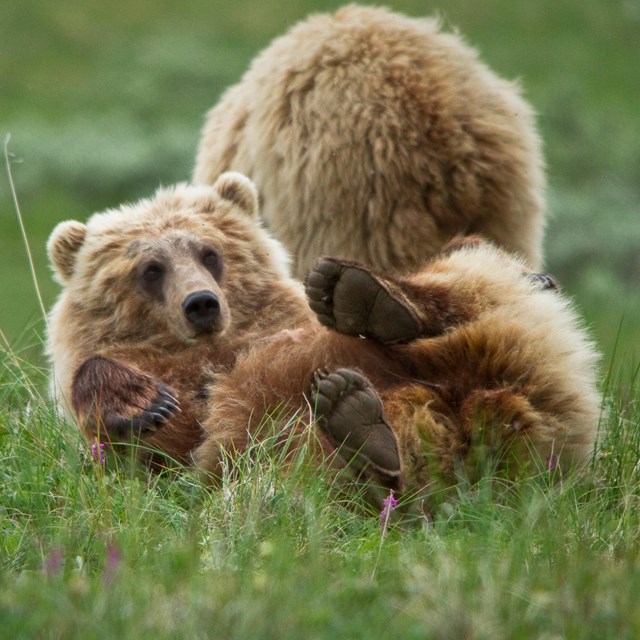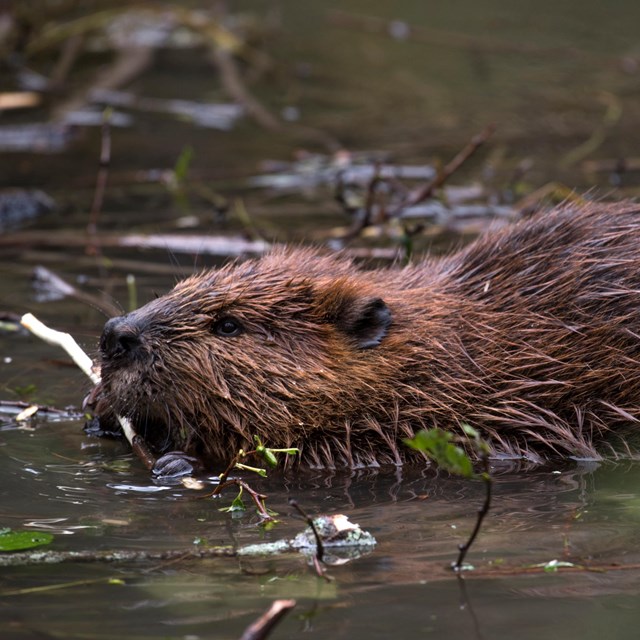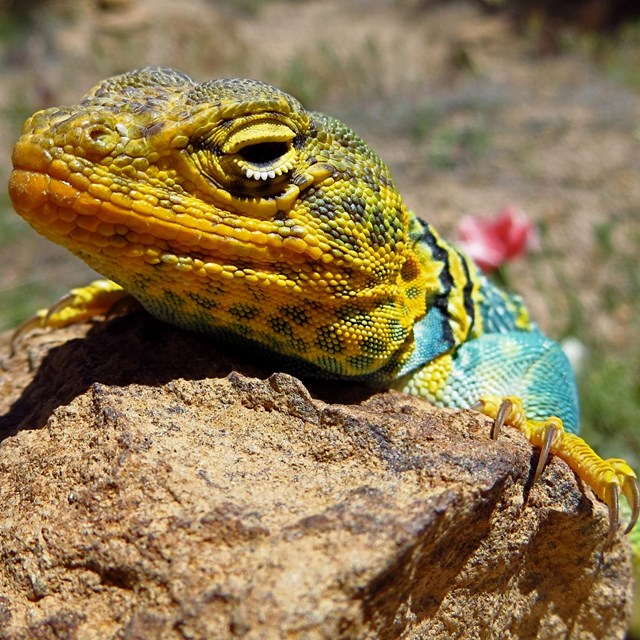
NPS Photo by Neal Herbert Although you may not see many during your visit, Natural Bridges is home to a wide variety of animals. Birds, desert cottontails, and lizards are common and may be seen by a majority of visitors. Many desert animals are either inactive during daylight hours or wary of humans, so sightings can be special events. Select a Park:Select a Species Category (optional):
Search results will be displayed here.
Early Bird or Night Owl?The animals at Natural Bridges have adapted to the desert’s harsh climate by being active at cooler parts of the day. Most animals are nocturnal, or mostly active at night. This can also be a way to avoid predators. Nocturnal animals include kangaroo rats and other small desert rodents, skunks, foxes, bobcats, mountain lions, and bats. Several animals are crepuscular, or active at dawn and dusk. Dawn and dusk are cooler times of the day and the half-light helps animals avoid predators while still being able to see food. Some animals are crepuscular because their prey is crepuscular. Crepuscular animals include mule deer, coyotes, porcupines, desert cottontails, black-tailed jackrabbits, and many songbirds. A few desert animals are diurnal, or active during the day. These include rock squirrels, antelope squirrels, chipmunks, lizards, snakes, and hawks. Many animals have a temperature range in which they are active, so their active times of day change with the seasons. Snakes and lizards go into a state of torpor (inactivity) during the winter, are diurnal during the late spring and early fall, and become crepuscular during the heat of summer. Many insects alter their times of activity. For example, mosquitoes may be out all night, all day, or at dawn or dusk, depending on temperature. Humans are diurnal, but should become crepuscular while visiting the park. Not only will your chances of seeing wildlife be greater, but your hike will be more enjoyable in the cooler morning. This also helps avoid afternoon thunderstorms in the summer. If you’re nocturnal, we’re also open after dark and have internationally-recognized dark skies! Small MammalsSmall mammals do well in the park's hot and dry climate. Because of their size, these animals have an easier time finding shelter and require less food and water to live. Rodents are numerous, with nine species of mice and rats alone. Common small mammals are the desert cottontail, deer mouse, white-tailed antelope squirrel, chipmunk, rock squirrel, and bats. 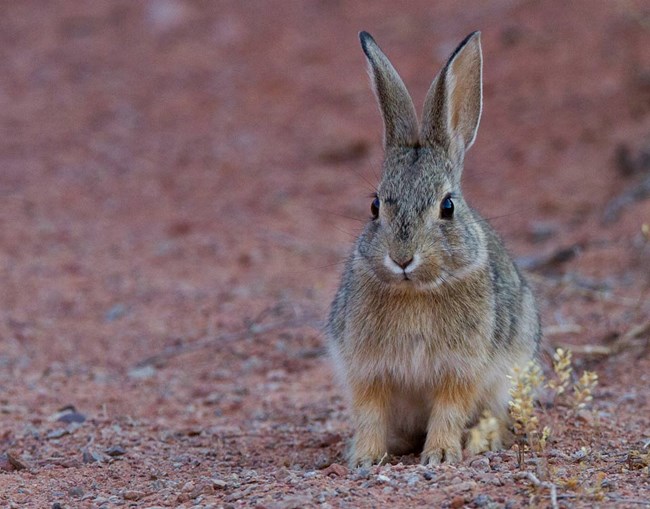
NPS Photo Spotlight: Desert CottontailWatch for cottontails hiding in the brushy desert scrub. Cottontails are named for the white patch of fur on their tail that resembles a cotton ball. They raise this white tail when danger is near, which serves as an alarm signal to other cottontails. These rabbits can run up to 20 mph in a zigzag pattern to escape predators! Cottontails belong to the order of mammals called rodents - a group of animals whose teeth never stop growing! Rabbits use their sharp, ever-growing teeth to nibble twigs and grasses. These furry critters keep themselves cool in the hot desert sun by radiating body heat through their large ears. Large MammalsLarge mammals, like mule deer and mountain lions, must roam vast territories in order to find food and water. They sometimes migrate to nearby mountains during summer. Mule deer are the most common large mammal and are often seen on the road coming into the park. Large predators, including mountain lions, bobcats, coyotes, and black bears, are less commonly seen, but their tracks are often spotted. ReptilesAlong with cacti and sand dunes, reptiles are icons of the desert. Reptiles are cold-blooded, regulating their body temperature with sunshine and shade rather than internally. Keeping warm in the desert requires little work during summer, so reptiles can use their energy to find food and reproduce. During cold months, reptiles hibernate. The only reptiles found in Natural Bridges are snakes and lizards. Visitors in summer months may see common sagebrush lizards, plateau lizards, side-blotched lizards, and maybe a prairie rattlesnake. 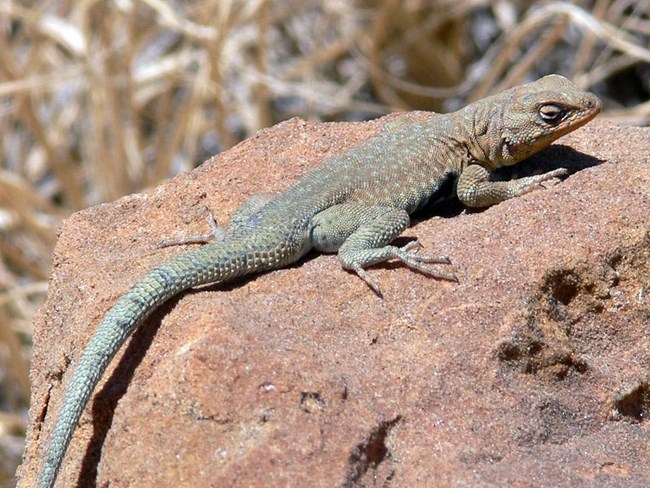
NPS photo Spotlight: Side-blotched LizardsLook for these four- to six-inch lizards sunbathing on warm summer days. Like most lizards, side-blotched lizards sit are opportunist hunters, waiting for prey to wander close. These lizards are easy to identify, with brown scales and tell-tale dark blue blotches behind the front legs. They hibernate in winter, but, because of their small size, are able to warm up quickly and move around on warm days. AmphibiansAmphibians may be the last thing people think of when they visit Natural Bridges. However, the area is home to a few varieties of toad and one species of salamander. These animals take advantage of intermittent springs and pools when they are available and remain dormant during drier periods. Witnessing a chorus of toads in White Canyon may be one of the most memorable experiences canyon country has to offer. 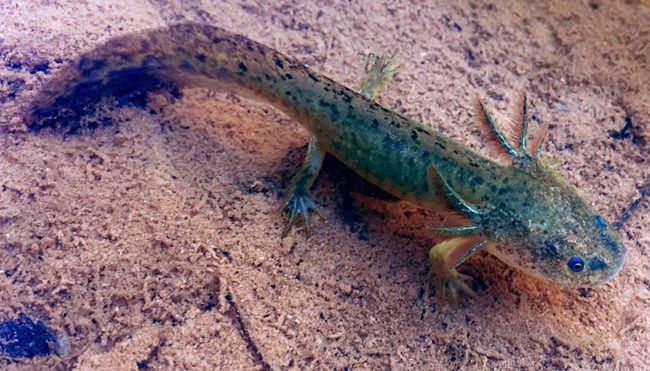
NPS Photo by Paula Messing Spotlight: Tiger SalamanderAlthough tiger salamanders are hard to spot, they are a fascinating part of Natural Bridges’ ecosystem. These salamanders are typically three to six inches long and have black and orange splotches like tigers. They require water for breeding and spend most of their life in burrows waiting for enough water. Young, or larval, salamanders have large heads with frilled external gills and four legs. In stock ponds, they may never fully mature and are able to reproduce in this stage. In ephemeral pools, the larvae will mature, but it can take one to three years. BirdsBirds are the most visible animals in Natural Bridges. Even on the hottest summer day, turkey vultures, ravens, and white-throated swifts circle above the canyons. Many birds concentrate in riparian areas on the canyon floors. During spring and summer, songs from birds like yellow-breasted chats, spotted towhees, and canyon wrens may be heard. Pinyon jays, scrub jays, and black-throated gray warblers are usually seen in pinyon-juniper woodlands. American kestrels may be seen on high perches, scanning for prey. 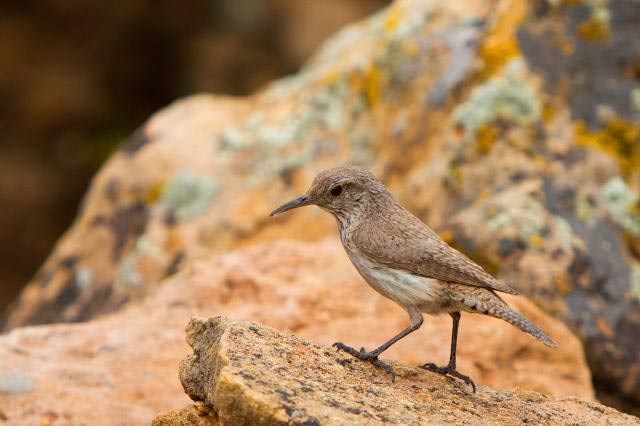
NPS Photo by Andrew Kuhn Spotlight: Rock WrenRock Wrens live in a world of cracks and nooks on rocky slopes and outcrops. They have a pale gray back, faintly striped breast, long tail, and long, thin bill. Rock wrens use their long bill to easily pick spiders and other insects out of narrow crevices. Both male and female rock wrens build a walkway of small, flat stones that lead to their cupped nest, located in a rock crevice or hole. They are frequently seen bobbing up and down, especially when alarmed. Safe Wildlife ViewingNever approach or handle wildlife of any kind. Keep all food stowed, especially in campsites. Learn MoreYou can explore these subjects from national parks around the country. Related Articles |
Last updated: April 18, 2025



